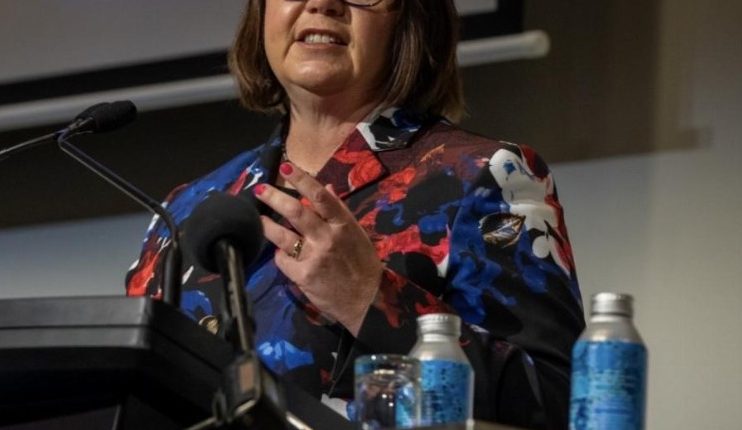Monday kicked off an exciting week for Australia’s mining industry, with the World Mining Congress in Brisbane hosting 3000 delegates from 70 countries across the globe.
The four-day conference honours more than 60 years of global mining discussions, and those on the table this year offer a glimpse into what the future of mining could look like.
Moon mining, semi-autonomous dozers with advanced technology, and minerals policy requirements are on the agenda this time around.
Meanwhile, discussions surrounding the closure of mines and opening of new mines as the industry evolves in the coming decades will also be had.
CSIRO, Australia’s national science agency, is spearheading the Congress, ten years in the making, and is being led by Chair Dr Hua Guo.
In the leadup to the event, Professor Mike Hood, the Congress’ Program Director, lobbed the question: “Can mining walk and talk at the same time?”
“Can we find and sustainably mine the vast amounts of critical minerals needed for decarbonisation, and at the same time, how can we decarbonise the industry itself, and make mining safer?” He said.
Professor Hood claims that Brisbane researchers hold the key to many of the answers.
The closure of mines opens a new atmosphere
As a result of the green energy transition, the World Mining Congress is tackling the difficult discussion that is the changing demand for minerals.
Many mines around the world will cease production over the next decade, and thousands of new mines will need to be built in record time to meet net-zero emissions targets.
Cooperative Research Centre for Transformations in Mining Economies (CRC TiME) Research Director Professor Tom Measham said the closure of mines was more of an opportunity.
“The focus should be on what comes next, what is the post-mining economic activity? the answer is likely to involve very different people,” he said.
Just some of the Australian examples expressed include transitions to a recreational public park, an underground physics research laboratory, and a pumped hydro facility.”
“Societal expectations have shifted over the years, and communities now expect mining companies to leave a positive legacy, there’s now a real opportunity to do things well,” Professor Measham added.
Another out-of-this-world idea up for debate is small-scale mining on the moon to support NASA’s planned return mission, Artemis.
The mission involves the production of just one kilogram of a resource such as water, oxygen or building material on the Moon, which experts say could save mining companies hundreds of thousands of dollars.
Advanced mining technologies and critical minerals
Monday also sparked further critical minerals debate, with discussions centred around mineral policy requirements for the next 30 years.
At the top of the list sits sand, the most mined material on earth, critical for all infrastructure and renewable energy requirements. However, its extraction from seas, rivers, beaches and quarries impacts the environment and surrounding communities immensely.
“Sand is the most exploited natural resource on the planet,” UQ Professor Daniel Franks said.
Professor Franks explained how sand could be produced with other building materials sustainably, including how to harvest it from mining waste.
Additionally, mining industry pioneer, Thiess joins Caterpillar at the Congress for a live demonstration of a remote-controlled operation of Cat semi-autonomous dozers on an operating mine site more than 800 kilometres away in Central Queensland.
CSIRO’s Dr Jonathon Ralston said the national science agency would present its latest remote innovations, which utilise 50 individual lidars, multiple cameras, and high-performance inertial sensors on production mining equipment.
“Around 90 per cent of Australia’s underground coal production comes from longwall mining using massive machines augmented with automation technologies developed by CSIRO in Brisbane,” he said.
Dr Ralston expressed that the technology, combined with modelling, data fusion, and visualisation provides real-time, actionable information for underground mining operations, which would overall make them safer to use.
The first time the congress travels to Australia
The 26th World Mining Congress is the first of its kind to be held in Australia, having debuted in Poland in 1958, and continuing every two to three years since.
The forum spans the entire Brisbane Convention Centre from 26 to 29 June 2023 and is UN-affiliated, with a secretariat in Poland.
The Congress has one common goal in mind, shared by its 3000 delegates this week, to explore how the industry can reimagine mining to resource the world for tomorrow.








